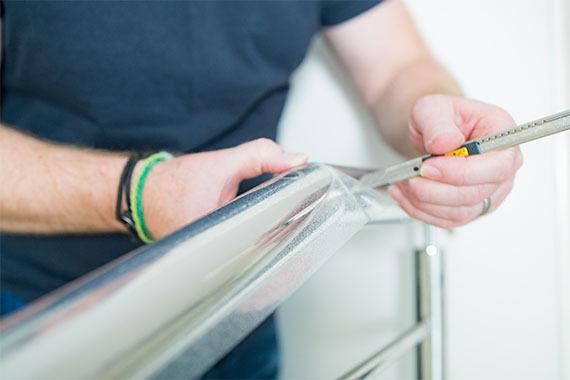More news
- Ask Joe Powder – October 2024
- Chinese paint majors look to domestic consumer sales as commercial real estate slumps
- Architectural coatings in Nepal and Bhutan
- A wild ride for U.S. construction and housing: Coatings and adhesives opportunities in 202...
- Levant paint industry and market marred by armed conflict and civil turmoil

In a clinical study that lasted several months, the effectiveness of antimicrobial treated surfaces against hospital pathogens was examined under real-life conditions at the University Hospital Basel in Switzerland. The research team, headed by Prof Dr Andreas Widmer and Dr R Frei, confirmed that the Sanitized® treated adhesive film developed jointly with Hexis S.A.S. has 98% effectiveness against microbes. The results were first published in the peer-reviewed scientific journal "Antimicrobial Resistance & Infection Control”. The study was supported by Innosuisse, the Swiss Innovation Agency.
Despite improvement in hygiene measures, it is estimated that hospital-acquired infections claim 37,000 human lives in the EU every year, whereas in the United States, they claim more than 98,000 lives. In addition, high economic losses are involved. Therefore, the development and research into the effectiveness of hygiene measures is critical, since the microbes that cause infections can survive on surfaces for hours or even months and be spread from there. One current field of research are antimicrobial coatings.
A case study at the University Hospital Basel headed by Prof Dr Andreas Widmer and Dr R Frei addressed the issue of whether and how effectively the antimicrobial coated plastic adhesive film from Hexis S.A.S. acts against the cause of what are commonly known as hospital-acquired infections (HAI).
In this study, the commercially available PURZON060B adhesive film by Hexis S.A.S. was tested, which is a flexible and transparent product with a silver-ion-based active ingredient supplied by SANITIZED.
Study setting: Frequently touched surfaces, with and without a Sanitized® treated coating
A real-life situation was created by focusing the study on frequently touched surfaces in six patient rooms, three in the surgical and three in the medical department. Specifically, overbed tables, bedside tables, arm rests of patient chairs, dining tables, toilet seats, and toilet flush handles were included. The Sanitized® treated film was applied onto half of the surface, while the other half remained in its original state and served as the control surface.
During the study’s several-month duration, the patients’ rooms were cleaned normally once a day, and the bathrooms were disinfected once a day. Swabs from the treated and untreated surfaces were taken twice a week from a 25cm² area and examined for micro-organisms. The number of microbes was determined by plating on culture media, and isolates were examined for clinically relevant pathogens such as Staphylococcus aureus (incl. MRSA).
Long-term effect: A clear and significant reduction in pathogens
All in all, 403 swabs were analysed. The Sanitized® treated film led to a reduction in total viable count of 98.4% across all six different surface types. The largest reduction was measured on the toilet seats and on the toilet flush handles (99%). In addition, the scientists have confirmed a highly significant reduction of pathogens, particularly enterococci. Their multi-resistant strains can survive on dry surfaces for up to four years and they were responsible for a nationwide outbreak in Swiss hospitals in 2017, which could only be contained after two years.
The long-term effect of the treated Sanitized® PURZON060B adhesive film by Hexis S.A.S was confirmed by repeating the measurement after six months. "A long-lasting antimicrobial surface supports hygiene management in hospitals and care facilities,” explained Michael Lüthi, CEO SANITIZED AG.
"The study results show that antimicrobial-treated surfaces can make a valuable contribution to preventing the spread of multidrug-resistant pathogens in hospitals. Even daily disinfection of surfaces cannot prevent recontamination within a few hours: antimicrobial-treated surfaces can close this gap," explained Prof Dr Andreas Widmer.
"For our antimicrobial adhesive film, we have co-operated with SANITIZED AG. Hospitals, senior residences and care facilities, thus benefit from decades of experience and the highest quality," explained Clément Mateu, CEO of Hexis S.A.S.



